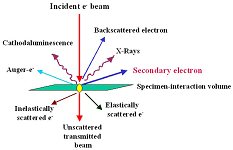
Asia Pacific Academy of Science Pte. Ltd. (APACSCI) specializes in international journal publishing. APACSCI adopts the open access publishing model and provides an important communication bridge for academic groups whose interest fields include engineering, technology, medicine, computer, mathematics, agriculture and forestry, and environment.

Development of logic gates and half adders for the concurrent detection of two DNA molecules
Vol 4, Issue 1, 2023
Download PDF
Abstract
In this study, Graphene oxide/gold nanoparticles composite membrane electrodes (GCE/GO/AuNPs) were fabricated using drop coating and electrodeposition techniques. By analyzing changes in the probe's surface configuration before and after binding with target DNA, the electrochemical signal varies, enabling the intelligent detection of E. coli and Salmonella DNA. Take the target as the input signal, and Σ|ΔI| and |ΔIMB/ΔIFC| constructs “and” and “XOR” DNA molecular logic gates for output, and proposes a new semi adder model that can be used for logic operations. Square wave voltammetry (SWV) was used to detect the current change value Σ|ΔI| of the two labeled probes, which was consistent with E. The logarithmic values of the concentrations of coli DNA and Sal DNA showed a good linear relationship in the range of 1.0 × 10−13 to 1.0 × 10−8 mol·L−1, and the detection limits (S/N = 3) were respectively 3.2 × 10−14 mol·L–1 and 1.7 × 10−14 mol·L−1.
Keywords
References
- Feynman RP. The Theory of Fundamental Processes. Westview Press. 1961; (2): 282.
- Adleman LM. Molecular Computation of Solutions to Combinatorial Problems. Science. 1994; 266(5187): 1021- 1024. doi: 10.1126/science.7973651
- Chen J, Zeng L. Enzyme-amplified electronic logic gates based on split/intactaptamers. Biosensors and Bioelectronics. 2013; 42: 93-99. doi: 10.1016/j.bios.2012.10.030
- Wu C, Wan S, Hou W, et al. A survey of advancements in nucleic acid-based logic gates and computing for applications in biotechnology and biomedicine. Chemical Communications. 2015; 51(18): 3723-3734. doi: 10.1039/c4cc10047f
- Fan CH, Liu DS. DNA Nanotechnology. Science Press; 2011. p. 409.
- Li W, Zhang F, Yan H, et al. DNA based arithmetic function: a half adder based on DNA strand displacement. Nanoscale. 2016; 8(6): 3775-3784. doi: 10.1039/c5nr08497k
- Robinson JT, Perkins FK, Snow ES, et al. Reduced Graphene Oxide Molecular Sensors. Nano Letters. 2008; 8(10): 3137-3140. doi: 10.1021/nl8013007
- Wang Z, Zhou X, Zhang J, et al. Direct Electrochemical Reduction of Single-Layer Graphene Oxide and Subsequent Functionalization with Glucose Oxidase. The Journal of Physical Chemistry C. 2009; 113(32): 14071- 14075. doi: 10.1021/jp906348x
- Liu X, Aizen R, Freeman R, et al. Multiplexed Aptasensors and Amplified DNA Sensors Using Functionalized Graphene Oxide: Application for Logic Gate Operations. ACS Nano. 2012; 6(4): 3553-3563. doi: 10.1021/nn300598q
Supporting Agencies
Copyright (c) 2023 Xiaoyong Jin, Di Zhang, Lijun Meng, Kaige Xu, Jie Lei, Juan Peng

This work is licensed under a Creative Commons Attribution 4.0 International License.

This site is licensed under a Creative Commons Attribution 4.0 International License (CC BY 4.0).
1.jpg)
Prof. Sivanesan Subramanian
Anna University, India





.jpg)
